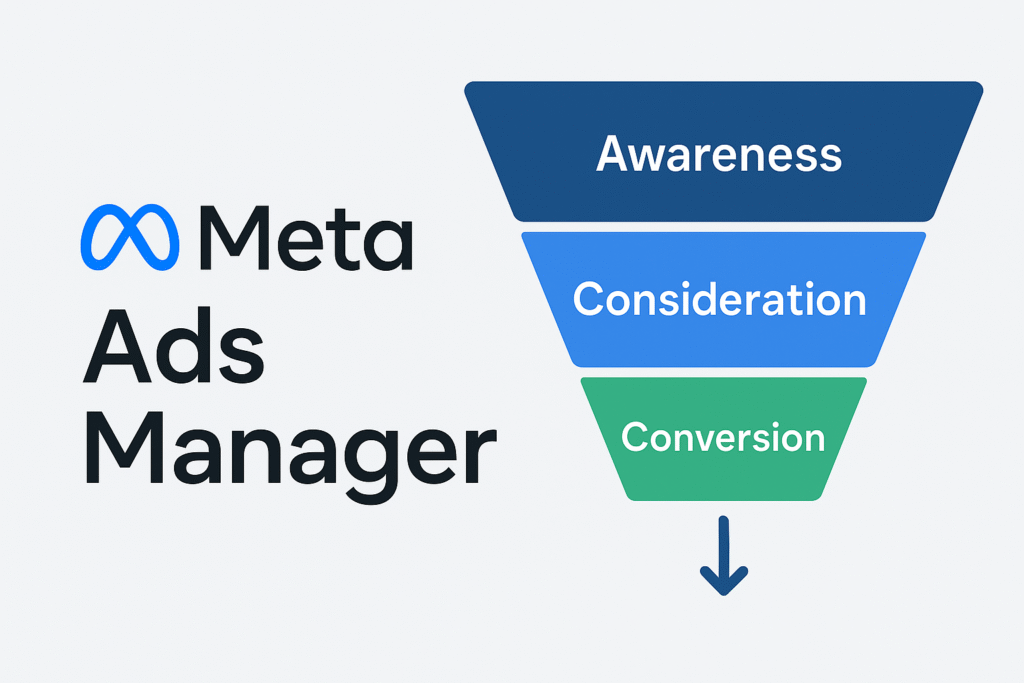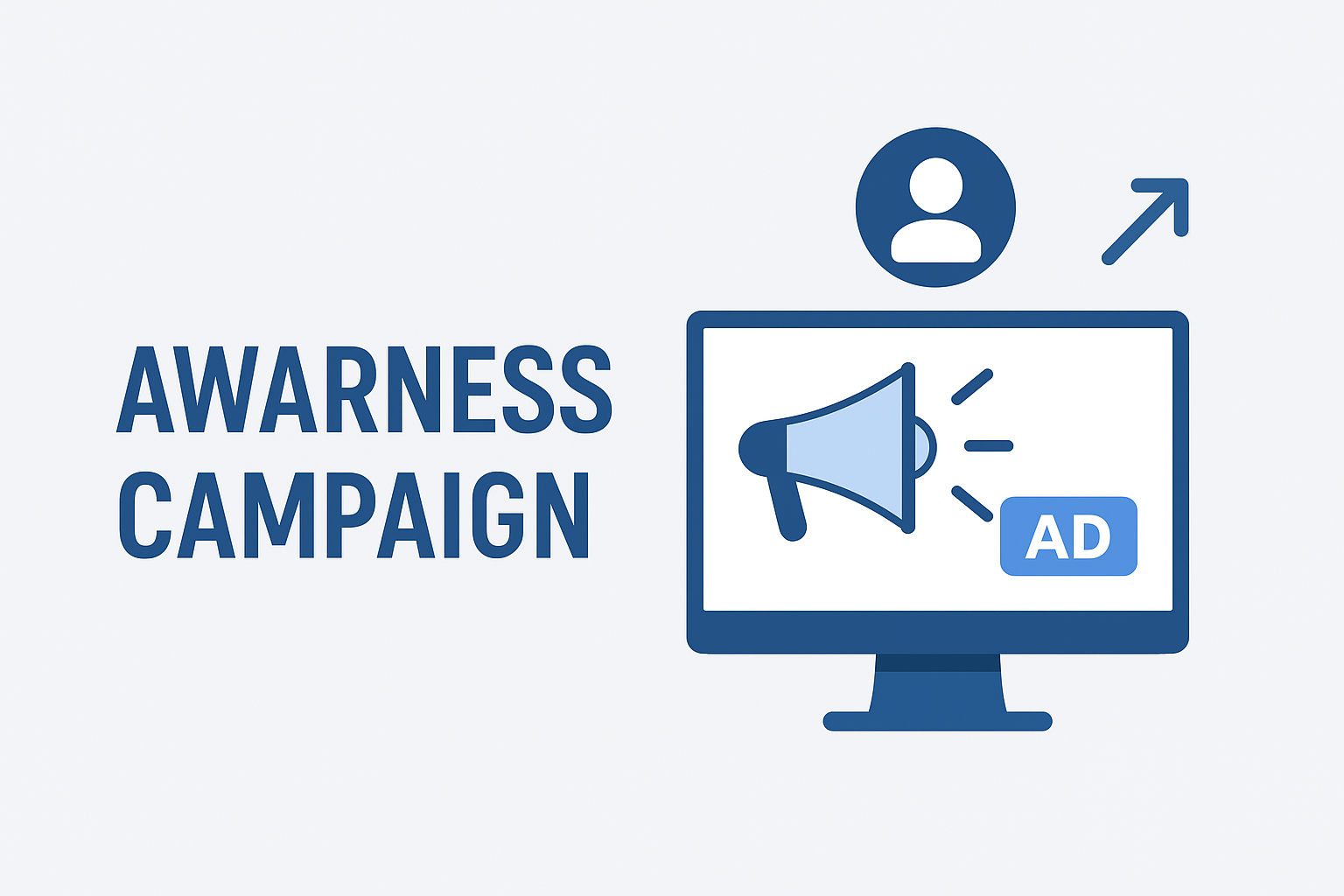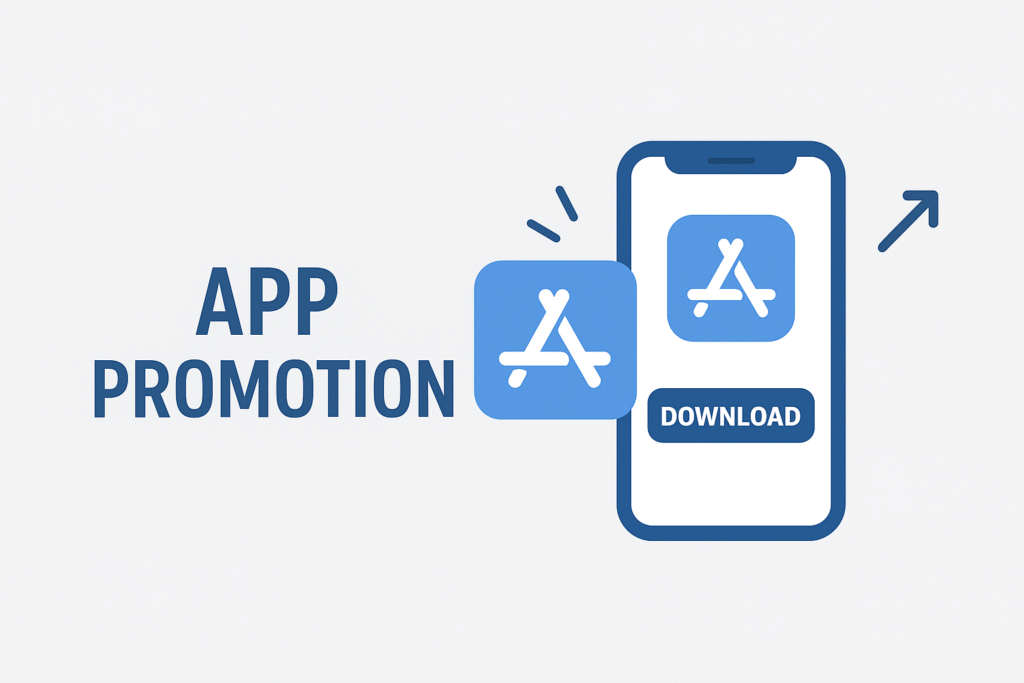Introduction
In today’s digital-first world, advertising isn’t just about reaching people—it’s about reaching the right audience with the right message at the right time. Meta Ads Manager, one of the most powerful ad platforms globally, helps businesses of all sizes achieve this with tailored campaign objectives.
From startups building brand awareness to established e-commerce stores driving sales, Meta Ads Manager offers six core campaign types. Each campaign is designed to guide potential customers through different stages of the marketing funnel—awareness, consideration, and conversion.
In this blog, we’ll explore the 6 types of campaigns in Meta Ads Manager in detail, with examples, benefits, and tips to help you choose the best one for your business goals.

1: Awareness Campaigns
Objective: Build brand recognition and let more people know about your business.
-
Reach Ads: Show your ad to the maximum number of people.
-
Brand Awareness Ads: Focus on people more likely to remember your brand.
Use Case Example:
A new cyber café in Bangalore launches an awareness campaign to reach young professionals and students nearby.
Benefits:
-
Expands brand visibility.
-
Helps new businesses introduce themselves.
-
Builds trust over time.
Tips:
-
Use short, catchy videos.
-
Highlight your USP (unique selling point).
2: Traffic Campaigns
Objective: Drive people to a specific destination—website, landing page, or app.
Use Case Example:
An e-commerce store runs a traffic campaign to drive users to its “New Arrivals” page.
Benefits:
-
Increases visits to your site or app.
-
Good for testing audience interest before pushing sales.
Tips:
-
Ensure your landing page loads fast.
-
Add a clear CTA (Call-to-Action) like “Shop Now” or “Learn More.”
3: Engagement Campaigns
Objective: Encourage people to interact with your ads—likes, comments, shares, follows, or event responses.
Use Case Example:
A fashion brand posts a new collection and runs an engagement campaign to generate buzz.
Benefits:
-
Builds social proof.
-
Increases brand credibility.
-
Helps posts go viral organically.
Tips:
-
Use contests, polls, or giveaways.
-
Post high-quality, relatable content.
4: Leads Campaigns
Objective: Collect valuable customer details like names, emails, or phone numbers directly from ads.
Use Case Example:
A coaching center creates a lead generation campaign for students to sign up for free demo classes.
Benefits:
-
Builds a contact list for future marketing.
-
Quick way to generate potential customers.
Tips:
-
Keep forms short (Name, Email, Phone).
-
Offer an incentive (free eBook, demo, or discount).

5: App Promotion Campaigns
Objective: Increase app installs or encourage people to use your app more often.
Use Case Example:
A food delivery app runs app promotion ads in a new city to get more installs.
Benefits:
-
Boosts app user base.
-
Encourages repeat usage with special offers.
Tips:
-
Highlight benefits like discounts or convenience.
-
Target people already interested in similar apps.
6: Sales Campaigns
Objective: Drive direct purchases, add-to-carts, or conversions.
Use Case Example:
A cosmetic brand runs a sales campaign during Diwali, offering discounts to increase online orders.
Benefits:
-
Delivers high ROI when optimized well.
-
Works best for businesses with a ready online store.
Tips:
-
Use dynamic product ads to show relevant items.
-
Add urgency (“Limited Time Offer”).
Conclusion
Meta Ads Manager has become one of the most powerful tools in the digital marketing ecosystem because it doesn’t just allow businesses to advertise—it empowers them to strategically connect with the right audience at the right stage of their journey. The six campaign types—Awareness, Traffic, Engagement, Leads, App Promotion, and Sales—are not isolated features but interconnected strategies that form the backbone of effective advertising on Meta’s platforms.
When we look closely, each campaign type addresses a different stage of the marketing funnel. Awareness campaigns sit at the top, casting a wide net to ensure more people know your brand exists. Traffic and Engagement campaigns move people into the consideration phase, where they begin to interact with your brand, learn more about your offerings, and evaluate whether you fit their needs. Leads, App Promotion, and Sales campaigns drive people into the conversion stage, transforming curiosity into concrete action. This structured flow demonstrates that Meta Ads Manager isn’t just about creating ads—it’s about building a journey that nurtures potential customers into loyal advocates.
For businesses, this means there is no “one-size-fits-all” approach. A small local business may find that Awareness and Engagement campaigns bring them the visibility they need in their neighborhood. A SaaS company or service provider might rely heavily on Leads campaigns to collect valuable customer information for nurturing. Meanwhile, an e-commerce store would prioritize Sales campaigns to directly impact revenue. The flexibility to choose and combine campaign types ensures that businesses of every size and industry can tailor Meta Ads Manager to their unique goals.
Another crucial factor is measurement. Meta Ads Manager provides insights and data at every campaign stage, allowing businesses to evaluate performance and refine strategies. This feedback loop is what makes the platform so effective—marketers are not left guessing. Instead, they can experiment, test, and optimize to ensure that each campaign delivers the best possible return on investment (ROI).
In a world where digital competition is fierce, simply running ads is no longer enough. Success requires strategic alignment—choosing the right campaign type, crafting compelling creatives, targeting the correct audience, and continuously monitoring results. By aligning campaigns with both business goals and customer needs, advertisers can achieve more than just short-term wins. They can create lasting relationships, drive brand loyalty, and scale sustainably.